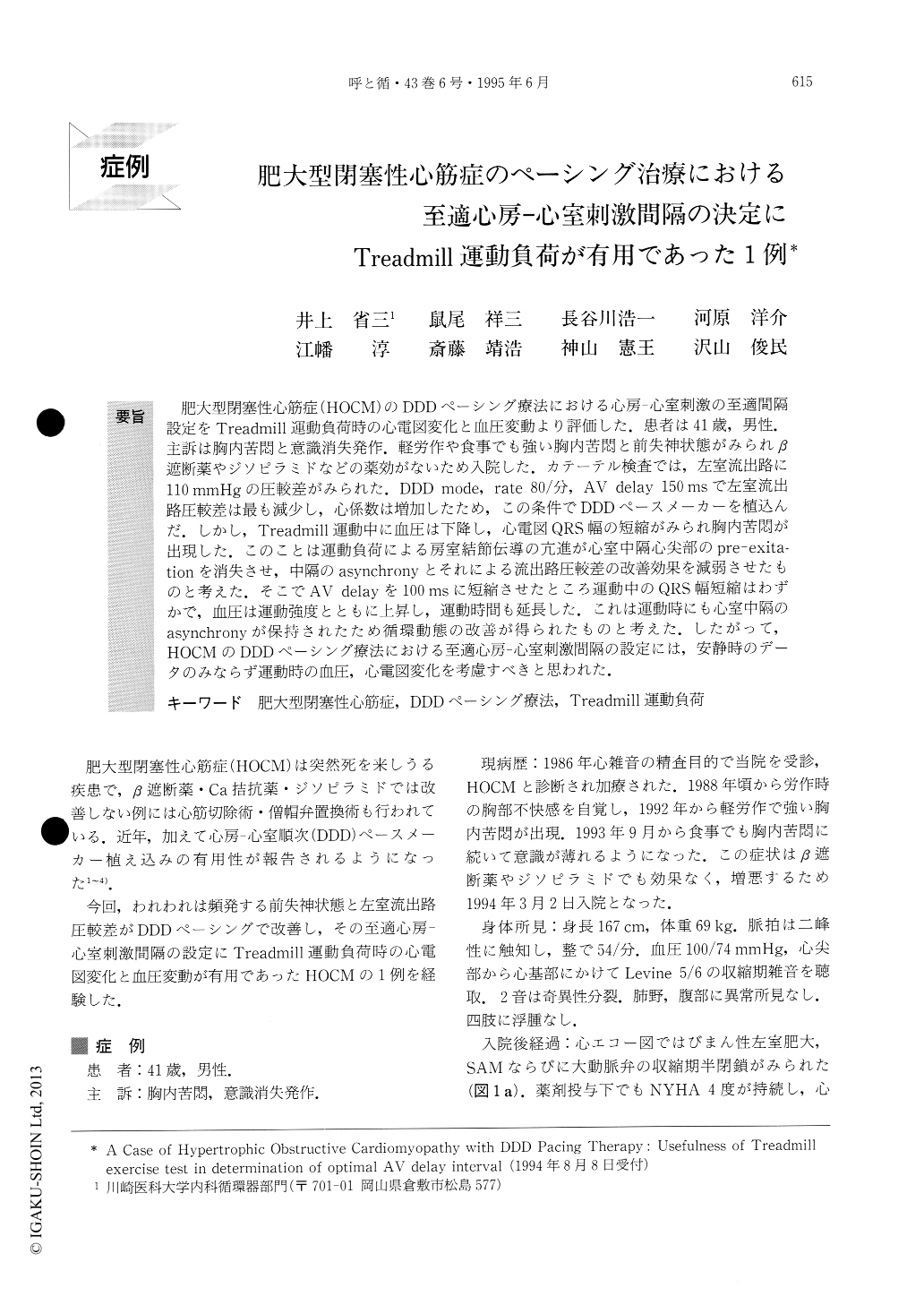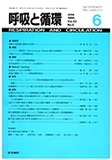Japanese
English
- 有料閲覧
- Abstract 文献概要
- 1ページ目 Look Inside
肥大型閉塞性心筋症(HOCM)のDDDペーシング療法における心房—心室刺激の至適間隔設定をTreadmill運動負荷時の心電図変化と血圧変動より評価した.患者は41歳,男性.主訴は胸内苦悶と意識消失発作.軽労作や食事でも強い胸内苦悶と前失神状態がみられβ遮断薬やジソピラミドなどの薬効がないため入院した.カテーテル検査では,左室流出路に110mmHgの圧較差がみられた.DDD mode,rate 80/分,AV delay 150msで左室流出路圧較差は最も減少し,心係数は増加したため,この条件でDDDペースメーカーを植込んだ.しかし,Treadmill運動中に血圧は下降し,心電図QRS幅の短縮がみられ胸内苦悶が出現した.このことは運動負荷による房室結節伝導の亢進が心室中隔心尖部のpre-exita—tionを消失させ,中隔のasynchronyとそれによる流出路圧較差の改善効果を減弱させたものと考えた.そこでAV delayを100msに短縮させたところ運動中のQRS幅短縮はわずかで,血圧は運動強度とともに上昇し,運動時間も延長した.これは運動時にも心室中隔のasynchronyが保持されたため循環動態の改善が得られたものと考えた.したがって,HOCMのDDDペーシング療法における至適心房一心室刺激間隔の設定には,安静時のデータのみならず運動時の血圧,心電図変化を考慮すべきと思われた.
Usefulness of Treadmill exercise test for evaluation of optimal AV delay interval in a case of HOCM with dual chamber pacing therapy was described.
A 41 year-old male was admitted for refractory dyspnea and presyncope during exercise.
Cardiac catheterization showed 110 mmHg of pres-sure gradient at left ventricular outflow tract, and the reduction of pressure gradient was most significant at 150msec of AV delay interval (DDD mode, rate 80/min). Then DDD pacemaker was implanted at the same AV delay interval.
During Treadmill exercise test, however, the patient complained of dyspnea, systolic blood pressure drop and QRS narrowing. These findings show that exercise enhanced AV conduction and interventricular septal asynchrony was lost.
After AV delay interval was shortened to 100msec, dyspnea was disappeared, systolic blood pressure was increased and QRS narrowing did not occur during exercise.
We conclude that optimal AV delay interval must be determined not only by the resting hemodynamic data, but also by the changes of blood pressure and QRS duration during exercise.

Copyright © 1995, Igaku-Shoin Ltd. All rights reserved.


